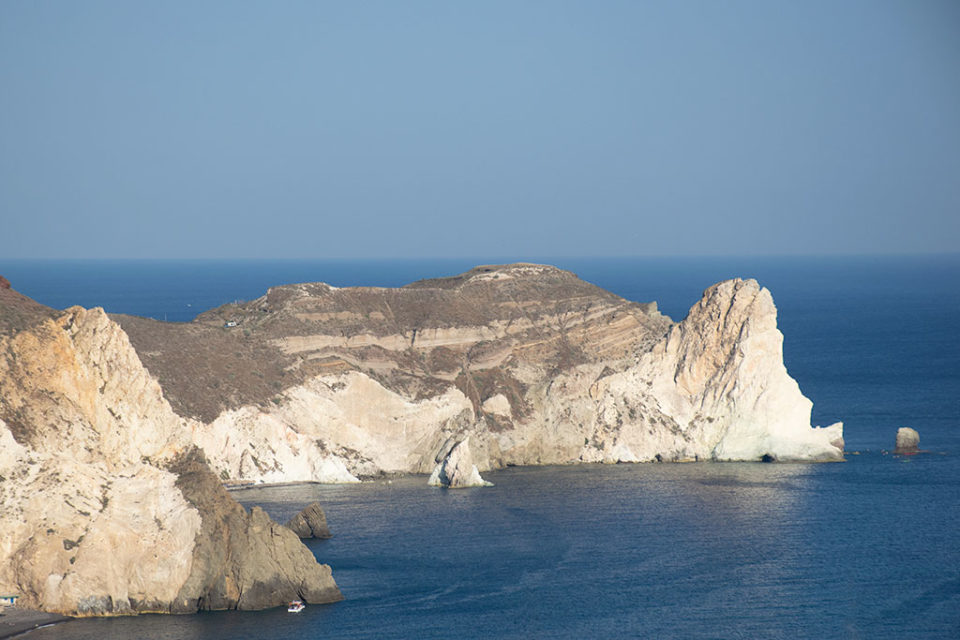Santorini island news
The unique “White Beach” of Santorini
Undoubtedly the specificity of the geomorphology of Santorini is what makes the island so special. The volcano has formed the island over the centuries and has now transformed it into an open geological book with impressive geological formations.
For example, the White Beach in Akrotiri, for which santorini.net asked the prominent volcanologist and ISMOSAV (Institute for the Study and Monitoring and the Santorini Volcano) President, George Vougioukalakis to explain how it got its white color.
“In the abrupt slopes of the coasts, we find lava and ash of the older volcanoes of Santorini (aged> 600,000 years), white in color due to the hydrothermal alteration they have suffered. There are overlaying layers of gray ash from the great explosions of the last 200,000 years of the volcano of Santorini”, commented Mr. Vougioukalakis.
The Santorini beaches
Santorini’s famous beaches are spread out mainly along the eastern and the south-eastern side of the island. Each beach has special characteristics, which make it unique and outstanding. The black shining pebbles, the unique land formations, the black, white and red sand, make up an unforgettable scenery. Most beaches are well organized offering the choice of lounge chairs, umbrellas, and various water sports.
Starting from the northern part of the island, the beaches on the coastline of Oia will instantly amaze, they have a wild and remote beauty. These beaches were frequented by locals, however recently they have been discovered by few tourists, mainly by families and couples, they can easily be passed by since they cannot be seen from the main road.
Coming from Oia, one will first come upon the beach of Baxedes, then follows the beach of Koloumbos and lastly we come upon Pori, a small fisherman’s port.
The Red beach, with its unique vertical cliffs, at Akrotiri area, is temporarily closed to the public (as per August 2013) due to fears of landslides.
Read more here.

